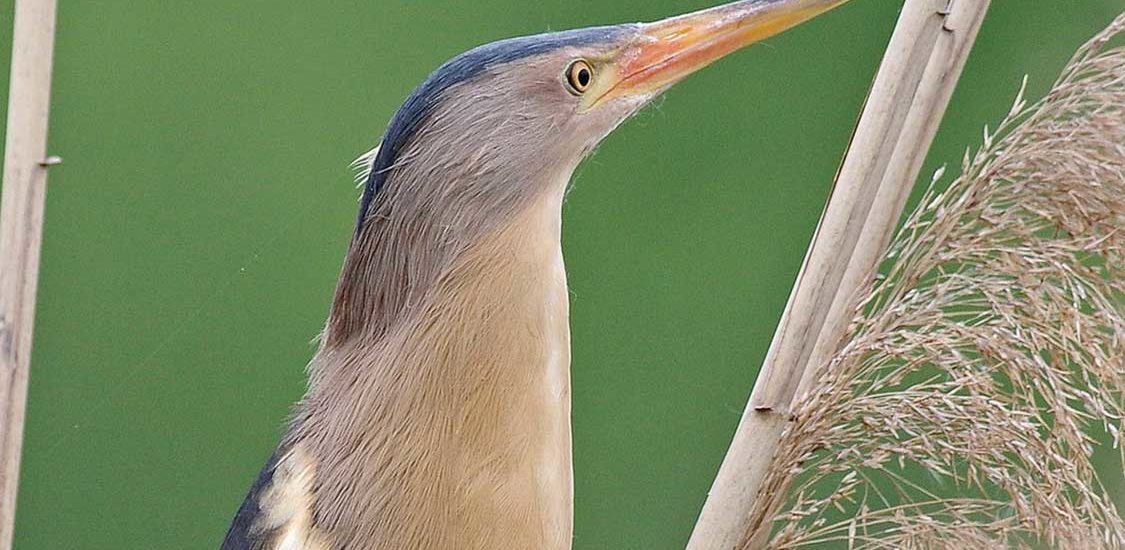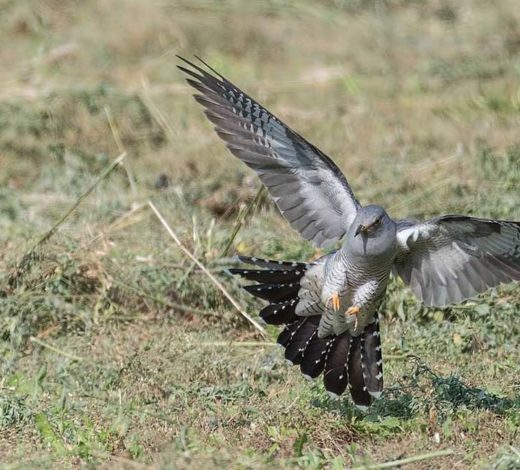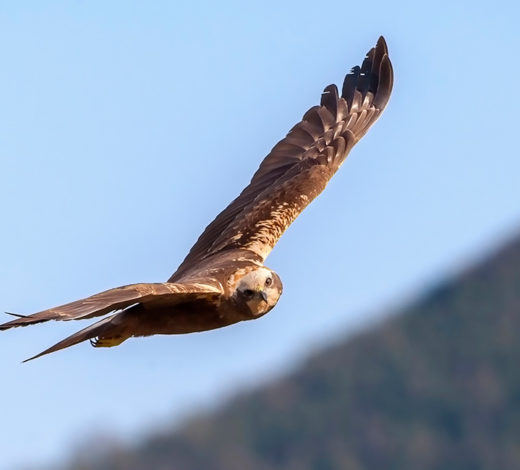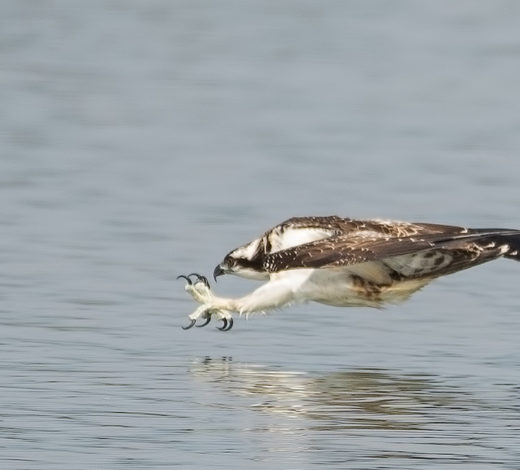Little Bittern
(Ixobrychus minutus)
This is the smallest European heron, very adept at camouflaging itself among the rushes.
Description
Featuring a notable sexual dimorphism, the males have a shiny black neck, cape, and tail, while these are brown for the females. The beak is yellowish with a red base during nest-building, and the legs are greenish. The young and females have brown stripes on the neck. Total length: 33–38 cm. Wingspan: 52–58 cm. Weight 70–160 g. They are shy and mainly active at sunset. Like the bittern, it sometimes adopts a mimetic position, standing still with its head and neck extended upwards, imitating the marsh reeds. When it flies, it alternates beats of its wings with coasting. It feeds on small fish, amphibians, molluscs, and insects that it captures while lying in wait or walking in the shallow water. It betrays its presence with a repeated call, which is hoarse and deep, similar to the bark of a small dog.
Habitat
In contrast to the bittern, it frequents a wide range of aquatic environments, both natural and artificial, as long as it is covered by adequate grassy and bushy vegetation, generally at altitudes less than 500 m.
Observation in the Torbiera Reserve
A long-range migratory species, it nests in Eurasia, Africa, and Australia. It winters in tropical Africa. It is present in Italy, nesting in summer. The small bittern can be seen in the Reserve in late spring and summer, between the end of April and mid-September. Ten pairs of small bitterns are present in the peat bogs, seeming to prefer a diversified environmental mix composed of water with bands of rushes and sparse medium-high bushes (‘Lame’) rather than an environment featuring only rushes (‘Lamette’). The small bittern seems to be stable in the Reserve. The importance of this species is also confirmed by its inclusion in Annex I of European Council Directive 79/409/EEC.



